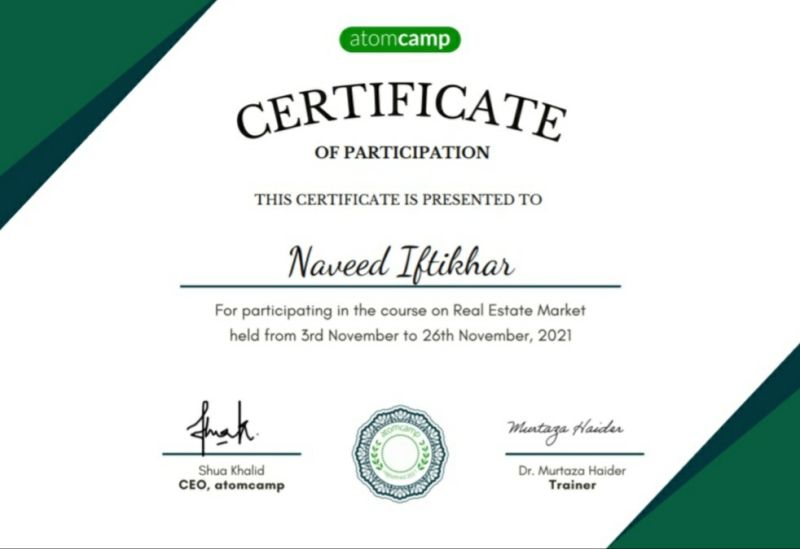TLDR
So you are geared to learn data analytics skills in 2024, but there’s a nagging concern. You lack any experience in the field and have been into an entirely different line of work (or study) like marketing, arts, or engineering .
Now, as you plan a major career change, the burning question is: Can you really pull off the transition in 2024? And what are the odds of landing a job?
In short, the answer is a yes—it’s possible. Not only that, but many top companies will also be receptive to bringing you on board (even without any experience).
That’s primarily because of the rise of AI and machine learning across various sectors. Interestingly, the year 2024 promises to be yet another happening year with a high demand for data analytics.
Key sectors like healthcare, retail, and finance, in particular, are set to be big players seeking professionals with data analytics skills.
In this guide, I’ll take you through the precise reasons and ways to learn data analytics skills in 2024 from square one.
Here is a brief breakdown of what we will be discussing:
- Get a foundational education.
- Build your technical skills.
- Work on projects with real data.
- Develop a portfolio of your work.
- Practice presenting your findings.
- Get an entry-level data analyst job.
- Consider certification or an advanced degree.
What is Data Analytics?
Data analysis is the process of gleaning insights from data to inform better business decisions. The process of analyzing data typically moves through five iterative phases:
- Identify the data you want to analyze
- Collect the data
- Clean the data in preparation for analysis
- Analyze the data
- Interpret the results of the analysis
Data analysis can take different forms, depending on the question you’re trying to answer. You can read more about the types of data analysis here.
Briefly, descriptive analysis tells us what happened, diagnostic analysis tells us why it happened, predictive analytics forms projections about the future, and prescriptive analysis creates actionable advice on what actions to take.

What are the types of data analysts?
With advancement in emerging technology, the ability to collect, organize, and analyze data has come out as a critical component across nearly every industry.
Data analysts are needed across various industries, including criminal justice, fashion, food, technology, business, environmental sciences, public administration, and beyond.
So, people engaged in data analysis may also hold alternative titles, such as:
- Business intelligence analyst
- Operations research analyst
- Intelligence analyst
- Medical and health care analyst
- Market research analyst
- Business analyst

Why start a career in Data Analytics?
Lately, lots of people are interested in learning data analystics skills in 2024. It makes sense, with all the data flying around nowadays.
Companies everywhere are desperate for talent who can handle data, figure out what it means, and use it to solve big problems. That’s where data analysts come in—they’re like the superheroes of number-crunching!
So, why should you think about becoming one? Well, here are a few good reasons:
1- The rising demand
First off, the demand for data analyst roles is through the roof. The job market for data analysts is in full swing, and there’s no sign of it slowing down anytime soon.
As per the US Bureau of Labor Statistics, the number of data analyst jobs is expected to jump by 23% from 2021 to 2031. This means If you’re looking for a career that’s built to last, this could be the ticket.
Plus, the global data analytics market is on fire. A 2022 report by Precedence Research shows that it hit a $41.39 billion USD, more than double its value in 2015.
This growth isn’t just good news for the market—it’s great for job seekers too. The World Economic Forum’s 2020 Jobs of Tomorrow Report points out that data and artificial intelligence (AI) are among the fastest-growing fields, with a staggering 41% annual growth rate.
2- To survive the AI-influenced markets
This trend gained even more momentum in early 2023 when ChatGPT hit the scene as the first available large-language model. This breakthrough opened up exciting new possibilities in data analysis.
Nowadays, being savvy with AI data analytics tools is essential, leveling the playing field for newcomers to the field without prior experience.
It’s no surprise, then, that courses and Data Science bootcamps are incorporating these tools and skills into their programs.
As highlighted in Forester’s 2024 Predictions Report:
“Those who will truly excel with genAI in 2024? It’ll be the data and analytics pros who invest in the right people, practices, and data strategies.”
Ultimately, a burgeoning data market means a wealth of job opportunities for data professionals—and, at present, the demand far outweighs the supply.
3- Lack of high-quality talent
The data market is growing at a rapid pace, and businesses are desperately trying to keep up.
Data-driven organizations consistently outperform their competitors, so it makes sense that hiring data experts will be an increasing priority across all industries. At the moment, though, we’re seeing something of a data skills gap.
In a study conducted by NTUC LearningHub, 93% of working professionals said that their workforce is not achieving optimal productivity due to a lack of data skills.
4- Compensation is attractive
Data analyst positions typically command lucrative salaries, with average pay hovering around $63,632 in the United States.

Can you learn Data Analytics skills without a technical background?
We’ll cut to the chase: It’s absolutely possible to become a data analyst, even if you’re starting from the beginning and don’t have any industry experience.
How can we be so sure?
There are several factors that make the data job market relatively accessible for newcomers:
- The significant and rapid growth of the data market
- The data skills gap
- The value of transferable skills within the data analytics field
- Let’s take a look at these in more detail.
Aside from the fact that data analysts are in high demand, the role itself requires a vast array of skills—many of which you’ll bring with you from other work and life experiences.
Some key transferable skills that will help you when you’re learning how to become a data analyst include:
- Curiosity and an inquisitive nature
- A penchant for problem solving
- Excellent communication skills (e.g. being good at explaining things)
- The ability to carry out research
- Attention to detail
- Collaboration and teamwork
You’ve no doubt picked up at least some of these skills already—be it at school, at work, or simply by interacting with different people. In the absence of data-specific experience, these transferable skills can help you demonstrate your suitability for data analytics jobs.

How much can you make with data analytics skills?
Data analysts’ salaries vary depending on factors like education, experience, location, and skills. Here’s a breakdown of typical salary ranges based on data from Payscale:
- Entry-Level: On average, entry-level data analysts start at around $57,492. After gaining one to four years of experience, they typically earn about $62,193.
- Mid-Level: With five to nine years of experience, mid-level data analysts earn an average of $70,302.
- Senior-Level: Senior-level data analysts, who have been in the field for 10 to 19 years, earn an average of $71,879. Those with over 19 years of experience bring in an average of $73,452.

How to learn data analytics skills in 2024: A step-by-step guide
To become a data analyst, you’ll need to learn the data science tools that data analysts use, have a thorough understanding of the mathematical principles underlying data analysis, have a command of the soft skills needed to solve problems, and be able to communicate your findings.
Let’s explore each step separately:
Step 1: Learn Data Analytic Skills You’ll Need
- Programming skills: The two most commonly used programming languages for data analysis and data science are R and Python. They each have their strengths and weaknesses, and there are endless debates about which is best for working with data. If you don’t want to choose a side, learn both so you’ll be prepared for anything. You’ll need these data skills to become a data analyst and work in the data market.
- SQL: SQL stands for Structured Query Language. It’s used to maintain, query, and manipulate data stored in large databases.
- Data cleaning and sorting: Data analysts spot trends and patterns in data, which they then use to gather insights and make predictions. However, your predictions are only as good as your data. So data analysts have to make sure the data they’re using is accurate, timely, and relevant. Cleaning and sorting data gets rid of duplicate, inaccurate, and irrelevant data so that you’re not making decisions based on bad information.
- Data visualization: Data visualization allows you to share your findings with a wider audience in an easy-to-understand format. Not everyone can derive meaning from looking at a CSV table, but almost everyone can understand data when it’s displayed in intuitive graphs and other visualizations. If you want to become a data analyst, you’ll need this skill.
- Data warehousing: A data warehouse is where you store and manage your data. It needs to be stored securely, but in a manner that’s easy to access and easy to retrieve. Not all data analysts become specialists in this field, but there are data professionals that focus exclusively on maintaining data warehouses.
- Advanced Excel: Many data analysts work with Excel if they’re doing preliminary work or working with smaller data sets. You’ll need to know to use its advanced functions to extract all of the information you can.
- Matlab: Matlab is a high-level programming language and platform that uses computations and algorithms to analyze large amounts of data and provide a visual representation of it. Most data analysts have a working knowledge of this language.

Step 2: Learn basic mathematical principles
Although programming will do most of the heavy math for you, as a data analyst you still need to understand the mathematical principles underlying data analysis and data science.
Statistics is the core of what data analysts and data professionals do. It’s a field of mathematics that’s concerned with collecting, analyzing, interpreting, and presenting data. Understanding statistics will help you differentiate between good and bad data, and help you make reasonable conclusions.
Mathematics. As a data analyst, you’ll also need to know other types of math that are used to build and deploy models for data analysis, including:
- Linear algebra
- Calculus
- Discrete mathematics

Step 3: Understand the data analytics methods
There are four primary types of data analytics. Each has a different purpose, but all are commonly used for business insights. To be a successful data analyst, you’ll need to be able to understand and implement each of these data science methods when relevant.
Descriptive Analysis
Descriptive analysis answers the question, “What happened?” This kind of analysis uses current and historical data to illustrate trends and patterns.
It’s often the first step in further data analysis. On its own, it’s the simplest and most common type of data analysis. Some examples of descriptive analysis include:
- Financial statement analysis
- Demand trends
- Survey results
- Traffic and engagement results
- Progress towards goals
Predictive Analysis
Predictive analysis answers the question, “What might happen in the future?” This kind of analysis predicts future outcomes based on historical trends.
This type of analysis is more complicated than descriptive analysis. It incorporates the use of machine learning and statistical algorithms. Some examples of predictive analysis include:
- Merchandise planning for retailers
- Predicting equipment failures and future resource needs
- Consumer behavior
- Population trends
- Optimize distribution
Diagnostic Analysis
Diagnostic analysis answers the question, “Why did this happen?” This kind of analysis tries to uncover the root cause of a given phenomenon.
Data analysts use diagnostic analysis to help their organizations understand why certain strategies are succeeding or failing. Here are some examples of diagnostic analysis:
1- Finding the cause of lost revenue
2- Understanding risk factors for data breaches
3- Analyzing which marketing campaigns have been most successful
Prescriptive Analysis
Prescriptive analysis answers the question, “What should be done?” This kind of analysis incorporates techniques such as graph analysis, simulation, complex event processing, neural networks, recommendation engines, heuristics, and machine learning. Some examples of prescriptive analysis include:
- Investment decisions
- Content recommendations
- Fraud detection
- Product development
- Scheduling

Step 4: Master the tools
There are some tools that almost all data analysts use, regardless of what industry they work in. These are tools you should be familiar with if you want to land a data analytics job without a college degree.
Tableau
Tableau is a very powerful data analysis tool. It lets you create a dashboard with interactive maps and stories for exploring and analyzing data.
Tableau’s intuitive UI allows users to answer questions and make connections with the data. Relationships and patterns are easy to explore. Tableau has a range of offerings, including mobile, web, and desktop applications.
SAS
SAS stands for Statistical Analytics Software. It’s a tool for analyzing statistical data. You can automate the process of running SQL queries with macros that allow you to retrieve, analyze, and issue reports on statistical data. SAS is a proprietary software, whereas R and Python are both open source.
SAS can handle large datasets (with a simple syntax) that don’t require previous programming experience.
With SAS, you can easily test and analyze algorithms. Its built-in error log helps with debugging, and it has enhanced security features that prevent remote downloads without a license.
Power BI
Microsoft’s Power BI is another data analysis and visualization tool that provides powerful business insights. It lets you visualize your data and share it across your organization. You can even embed it into your website or app. Its versatility comes from its individual components to create customizable solutions. It offers a free desktop version for use with Windows computers that lets you:
- Connect with data
- Transform and model data
- Create graphs and charts
- Create a collection of visuals on a dashboard
- Share reports with others
It also offers a premium version called Power BI Pro that contains even more features, such as the ability to: - Embed Power BI visuals into Power BI apps
- Integrate with other Microsoft products such as Azure
- Create workspaces for collaborative efforts
- Share data and dashboards with other Power BI users
Apache Spark
Apache Spark is a fast, flexible, developer-friendly, open-source platform that does large-scale data processing and machine learning.
It can also distribute data processing across multiple computers to help facilitate machine learning tasks that require more computing power.
It’s used by major companies in all industries, including banks, telecommunication companies, and major tech companies like Apple, Facebook, IBM, and Microsoft.

Step 5: Practise the skills on data sets
The most effective approach to mastering data analysis is through hands-on experience. Begin by dissecting case studies across various domains like business, government, and healthcare.
Analyzing successful case studies unveils the pivotal role of data analytics in shaping advanced metrics and driving progress.
Once you’ve delved into existing case studies and grasped their intricacies, dive into live projects. Platforms such as Kaggle, GitHub, and Our World in Data offer open-source datasets for crafting your projects.
Tackling real-world challenges equips you with the expertise to execute data analytics projects comprehensively, from inception to fruition.

Step 6: Get certifications and participate in competitions
Securing certifications in data analytics stands as a prime method for demonstrating your skills, especially if you lack a degree.
Several companies, including Cloudera, SAS, atomcamp, and Microsoft, offer certifications for the tools used by data analysts. Improve your chances of landing a job in data analytics by pursuing certifications such as:
- atomcamp’s Data Analytics certification
- SAS Certified Data Scientist
- Cloudera Certified Associate: Spark and Hadoop Developer Certification
- Microsoft Certified Azure Data Scientist Associate
Furthermore, online courses like Springboard’s Data Analytics Career Track provide a valuable means to validate your data analysis skills. With their curriculum, bootcamps offer a structured pathway to acquiring the necessary skills. You can also explore data science courses to further bolster your capabilities as a data analyst.

Step 7: Apply for freelance gigs and jobs
Now, once you have the certification and the portofolio, it’s time to get started with finding the real-time projects. We understand that you might wonder, who will get you beginner-friendly roles?
This is where freelance gigs come into play. Interestingly, the clients on these platforms are looking for fast-talent acquisitions and solve every problem-specific project. That’s your chance to get your career rolling formally.
Here is how you can do it:
1- Create a profile on any freelance marketplace, including Upwork and Fiverr.
2- Optimize your profile and add portfolio projects.
3- Find out the most in-demand gigs related to data analytics.4- Understand the job selection.
5- Shortlist the jobs with low competition and where your expertise lies.
6- Write a detailed proposal with a roadmap for the project execution.
7- Go prepared for an interview and ask the right questions.8- Get the contract and deliver the project on time.

How to learn data analytics skills in 2024: Our conclusion
If you dedicate 15 to 20 hours per week to a structured program like atomcamp’s data science bootcamp, you can likely grasp the fundamentals of data analytics within 3-6 months.
In comparison, earning a degree in data analysis or a related field typically takes around four years. Learning independently and piecing together your own resources can extend this timeline significantly.
Quality bootcamps provide a meticulously crafted curriculum tailored for optimal learning. They focus on imparting the most sought-after skills and techniques that employers demand.
The guidance and structure offered by bootcamps can expedite your learning process and prepare you for a career more swiftly.
